| Columns Retired Columns & Blogs |
This is my speaker, paired with NAD C 326BEE. The sound is great and easy to listen too.
I measured the Wharfedale Diamond 10.1's frequency response in the farfield with DRA Labs' MLSSA system and a calibrated DPA 4006 microphone. For the nearfield measurements, I used an Earthworks QTC-40 microphone. The Diamond 10.1 is of below-average voltage sensitivity, at an estimated 86dB/2.83V/m, though this agrees with the specified figure. The impedance drops below 4 ohms in the lower midrange, reaching a minimum value of 3.6 ohms at 190Hz (fig.1), but the speaker is otherwise fairly easy for the partnering amplifier to drive. An amplifier or receiver rated into 4 ohms will have no problems with the Diamond 10.1.

The impedance-magnitude trace in fig.1 reveals a suspicious-looking spike just above 200Hz. Investigating the cabinet's vibrational behavior with a plastic-tape accelerometer did uncover a resonant mode at 234Hz, as well as others nearby at 184 and 262Hz. The 234Hz mode was strongest on the top panel, but the strongest mode on the side panel was higher in frequency, at 563Hz (fig.2). While these resonances are significantly lower in level than with the Diamond 9.1, which had a livelier enclosure, I would have expected this behavior to add a touch of midrange congestion to the Wharfedale's sound. However, as Bob Reina noticed no such congestion, it's possible that the affected areas are too small, and the quality factor (Q) of the resonances too high, for them to add any coloration.
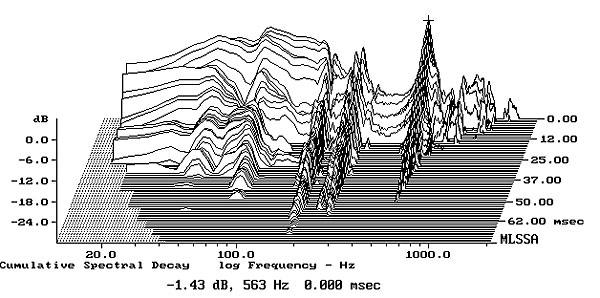
The saddle at 50Hz in the impedance-magnitude trace indicates that this is the tuning frequency of the twin ports on the cabinet's rear, and the woofer's nearfield response does indeed feature a minimum-motion notch at 49Hz (fig.3, blue trace). The back pressure from the port resonance holds the woofer cone still at this frequency, all the speaker's output coming from the ports (red trace). The output of the ports rolls off smoothly above the midbass. The crossover to the tweeter (green trace) occurs at 1.8kHz, as specified, and both drive-units are well behaved within their passbands.
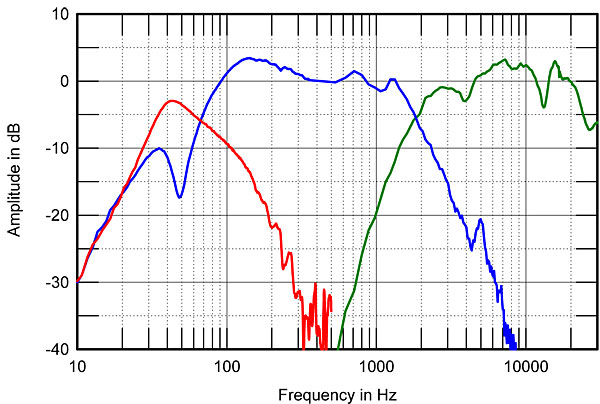
The blue trace in fig.3 shows the complex sum of the Wharfedale's woofer and port nearfield responses, spliced at 300Hz to the speaker's farfield response with the grille removed and averaged across a 30° horizontal window on the tweeter axis at 50". The boost in the upper bass will be entirely due to the nearfield measurement technique; the speaker is basically flat almost down to the port tuning region. Higher in frequency, other than a slight excess of energy between 4.5 and 11kHz, it is impressively flat. However, BJR preferred listening to the Diamond 10.1s with their grilles in place. The red trace in fig.4 shows the response averaged across a 30° horizontal window on the tweeter axis at 50" with the grille in place. The entire treble region is flatter, though there is now a sharp suckout on axis at 3.6kHz. Fig.5 shows the Wharfedale's lateral dispersion; the apparent off-axis peak at 3.6kHz is due to the on-axis suckout filling in to the speaker's sides, as can be seen in fig.6, which shows the actual responses rather than the differences between the off- and on-axis responses. The tweeter maintains its radiation pattern up to 12kHz or so.
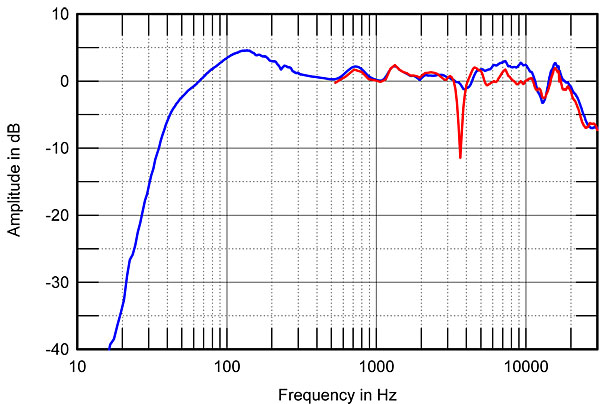


In the vertical plane (fig.7), the Wharfedale offers pretty much the same balance over a wide ±10° window centered on the tweeter axis. The choice of speaker-stand height will not be quite so critical with this speaker as with some other models, though if you listen while standing, you'll hear a suckout in the crossover region.

The Diamond 10.1's step response (fig.8) indicates that the drive-units are connected with the same positive acoustic polarity. The smooth blending of the tweeter's sharp, short step with the slower rise of the woofer step indicates optimal crossover design. The Wharfedale's cumulative spectral-decay plot on the tweeter axis (fig.9) is impressively clean for such an inexpensive design.
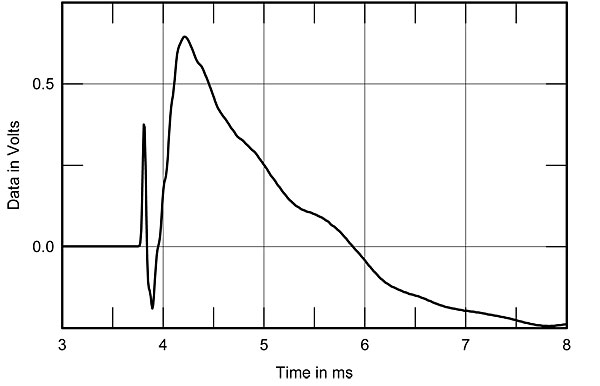
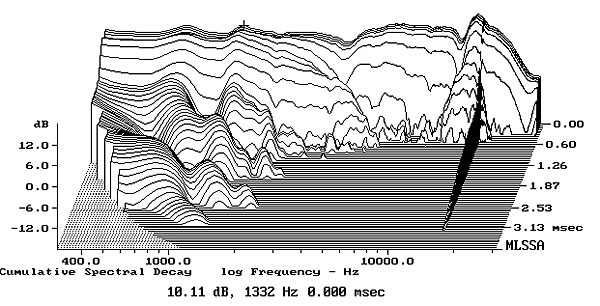
The measured performance of Wharfedale's Diamond 10.1 would be superb even if the speaker did not cost just $350/pair. But then, its designer, Peter Comeau (footnote 1), is one of the UK's senior speaker engineers; I would have expected from him no less.—John Atkinson

This is my speaker, paired with NAD C 326BEE. The sound is great and easy to listen too.

I am in the market for speakers for my Rotel RA-1520 (2*60W) integrated amp.
These will be located in my office and not a large room and will be sitting on either side of my office desk so bookshelf is preferred. I listen to a variety of new/old rock, jazz, plus some top 40 stuff (easy on the brain). I am currently using Boston Accoustics T-1030 which I bought in the mid 90's and had recently refoamed.
My setup is:
Rotel RA-150
Cambridge Dacmagic Plus
iTunes / Channel D Pure player.
As I am not really near an urban centre, I am limited to what I can listen to in person.
on my list of potential candidates are:
B&W 685 (or even CM-5 if they go on sale) - heard the 685 which sounded amazing but was not ready to commit.
Wharfedale Diamond series - great reviews but have not listened to them.
KEF Q series (I did hear these in a loud environment and did like them).
PSB Alpha B1 - recommended by this website/magazine ;)
Any recommendations or suggestions would be appreciated.